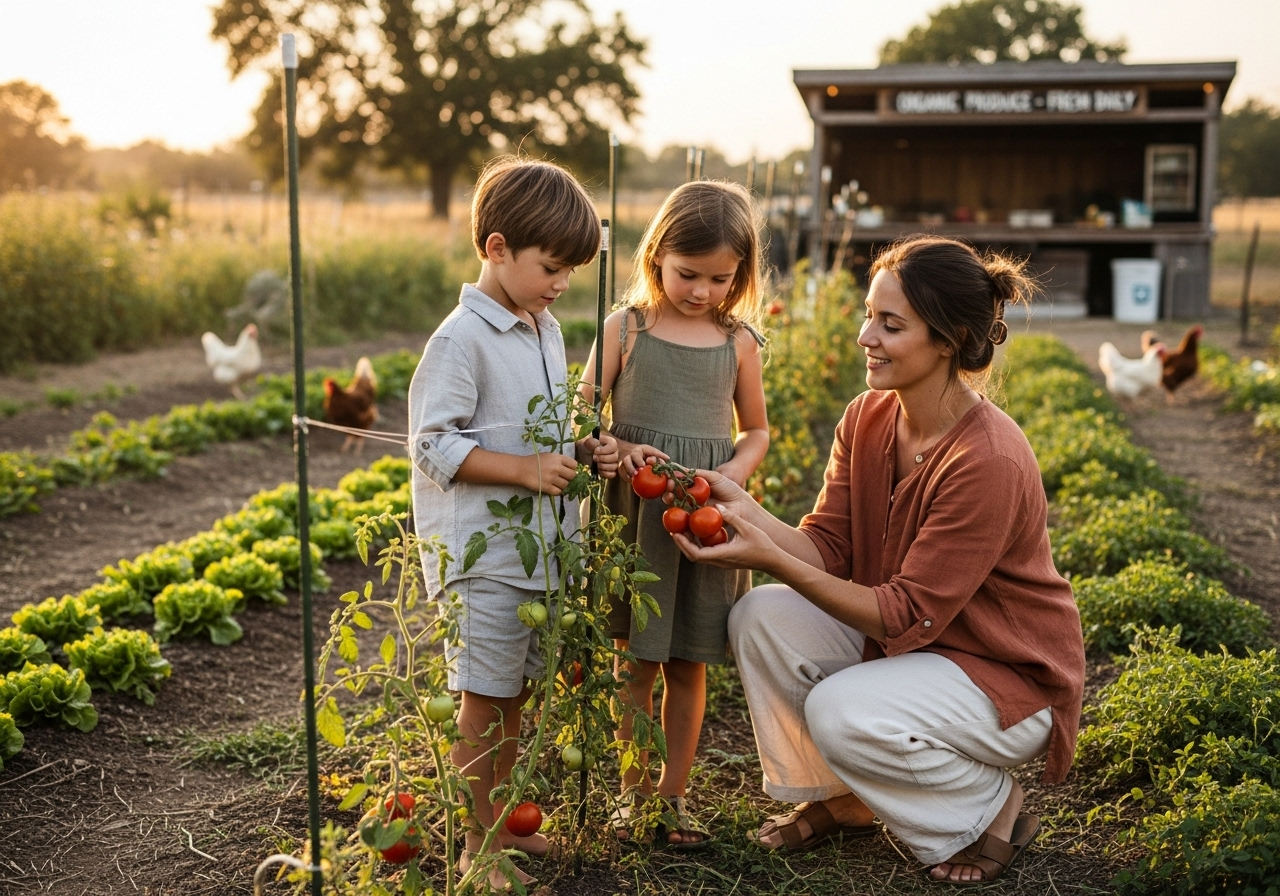Category: Homesteading | 8 min read
Our First Year of Homesteading: Lessons from the Land
From city life to country dreams—the beautiful, chaotic, and deeply rewarding journey of building a self-sufficient life from scratch.
By Admin
Published: 10/6/2025

When we first pulled into our new property last spring, it looked nothing like the Pinterest homestead of my dreams. Where I'd envisioned orderly vegetable rows and charming chicken coops, we found overgrown fields, a leaky barn, and soil that seemed more rock than earth. My husband looked at me with a mixture of love and concern as I stood there in my city shoes, trying to envision our new life.
Twelve months later, as I write this with dirt still under my fingernails and the sound of our chickens settling in for the night, I can honestly say this has been the most challenging and rewarding year of our lives.
The learning curve was steep. Our first attempt at a garden was laughably amateur—we planted tomatoes too early, put sun-loving plants in shade, and somehow managed to grow the world's most expensive lettuce (when you factor in all the supplies we bought). But with each failure came knowledge, and gradually, our small successes began to outweigh our mistakes.
The chickens were our first real victory. Those six fluffy chicks we brought home in a cardboard box have become the personalities of our homestead. Each one has her own quirks and preferences. Henrietta always greets me at the gate, while Beatrice prefers to perch on my shoulder as I collect eggs. Watching them free-range across our property, scratching and pecking at will, feels like giving these creatures the life they were meant to have.
Water management became our unexpected expertise. City dwellers don't think much about where water comes from or where it goes, but homesteaders become intimately familiar with both. We learned to harvest rainwater, direct runoff to benefit our plants, and conserve every precious drop during dry spells. Installing our greywater system felt like earning a PhD in practical engineering.
The preserving season taught us about abundance and scarcity in equal measure. August brought more zucchini and tomatoes than we knew what to do with, leading to marathon sessions of canning, dehydrating, and freezing. I became skilled at fermentation—not just vegetables, but kombucha, sourdough, and even attempting cheese-making. Our pantry now looks like something our great-grandmothers would recognize.
Winter tested our preparedness in ways we hadn't anticipated. When a storm knocked out power for three days, we discovered how well our systems worked. Our wood stove kept us warm, preserved foods fed us, and we had enough water stored to keep the animals comfortable. It was exhausting but also deeply satisfying to realize we could take care of ourselves.
The children have been transformed by this life. My teenagers, who used to beg for fast food, now request meals made from our own vegetables. They understand the work that goes into food production and don't take meals for granted. They've learned practical skills—my 15-year-old can repair fencing, and my 12-year-old knows how to treat a chicken's minor injury.
The financial aspect has been interesting. Our grocery bills have definitely decreased, but we've invested heavily in infrastructure—fencing, irrigation, preservation equipment, and tools. The real savings come in peace of mind and food security. We know where our food comes from and how it was raised.
Community has been essential. Other homesteaders became mentors, sharing knowledge and sometimes lending equipment. We've learned that self-sufficiency doesn't mean isolation—it means being a valuable member of a community where everyone has skills to share.
This lifestyle isn't for everyone, and it's definitely not as romantic as social media makes it look. It's hard physical work, often done in uncomfortable weather. Equipment breaks at inconvenient times. Animals get sick. Crops fail despite your best efforts.
But the connection to the land, the cycles of the seasons, and the knowledge that we're providing for our family with our own hands makes every challenge worthwhile. We're not just living on the land—we're partners with it, learning its rhythms and respecting its wisdom.
As we plan for year two, our dreams are more grounded in reality but no less ambitious. We know now what we can handle and what we need to learn. The Pinterest homestead might still be a fantasy, but this real, messy, beautiful life we're building feels infinitely more valuable.